 Frank
and Albert Michaud, two local prospectors, discovered the cave in 1900,
when they felt cold air blowing out of a small hole in a canyon. It
is unknown whether any previous inhabitants of the area were aware of
the natural cave opening, which was not large enough for a person to
enter. After enlarging the cave entrance with dynamite, the Michauds
found a cavern lined with calcite crystals, which led them to name it
"Jewel Cave." The brothers tried to capitalize on the discovery,
widening the opening, building walkways inside, and opening it to tourists.
Although their venture was unsuccessful, news of the discovery eventually
reached Washington. President Theodore Roosevelt proclaimed Jewel Cave
a National Monument on February 7, 1908. The area around the natural
entrance to the cave was further developed by the Civilian Conservation
Corps in the 1930s. The National Park Service assumed management of
the monument in 1933 and began offering tours in 1939. Frank
and Albert Michaud, two local prospectors, discovered the cave in 1900,
when they felt cold air blowing out of a small hole in a canyon. It
is unknown whether any previous inhabitants of the area were aware of
the natural cave opening, which was not large enough for a person to
enter. After enlarging the cave entrance with dynamite, the Michauds
found a cavern lined with calcite crystals, which led them to name it
"Jewel Cave." The brothers tried to capitalize on the discovery,
widening the opening, building walkways inside, and opening it to tourists.
Although their venture was unsuccessful, news of the discovery eventually
reached Washington. President Theodore Roosevelt proclaimed Jewel Cave
a National Monument on February 7, 1908. The area around the natural
entrance to the cave was further developed by the Civilian Conservation
Corps in the 1930s. The National Park Service assumed management of
the monument in 1933 and began offering tours in 1939.
|
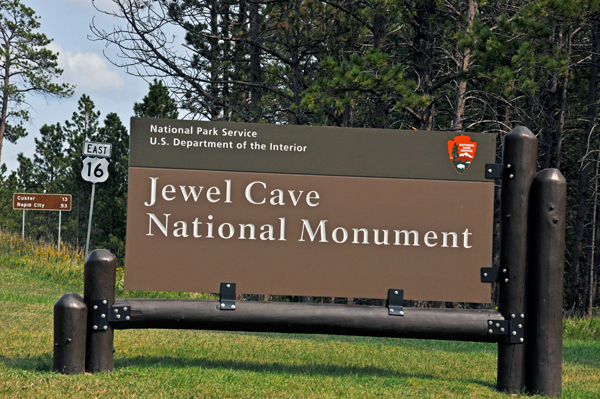 |
 |
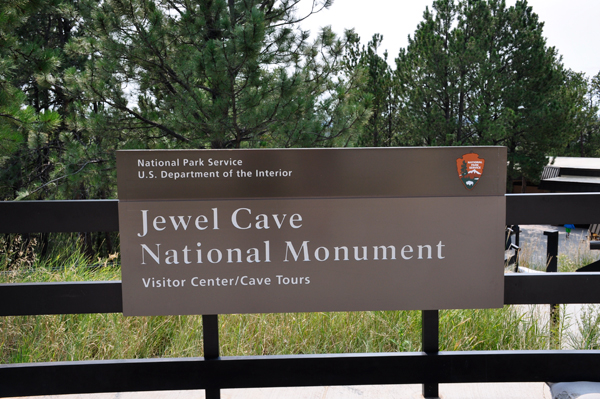 |
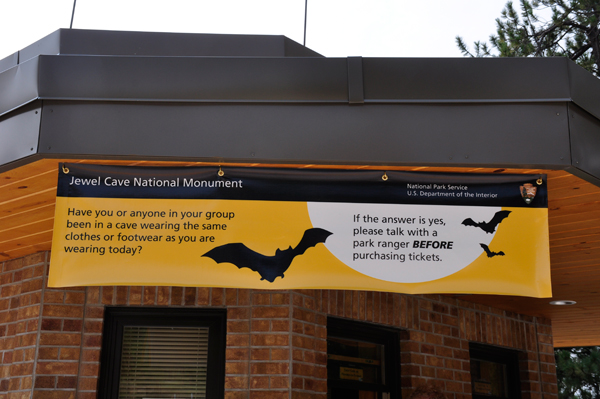 |
Forbidden Items: All
backpacks, big purses, weapons, hiking/walking sticks/poles -
for your protection as well as that of the cave, these items are NOT
allowed on ANY cave tour.
-
Food, gum, candy, drinks, tobacco products, monopods, tripods,
large flashlights, pets, strollers, and child backpack carriers
are not permitted on any cave tour.
-
Any items used or worn in a cave outside of the Black
Hills. This is to prevent the spread of White Nose Syndrome,
a fungus known to kill bats.
|
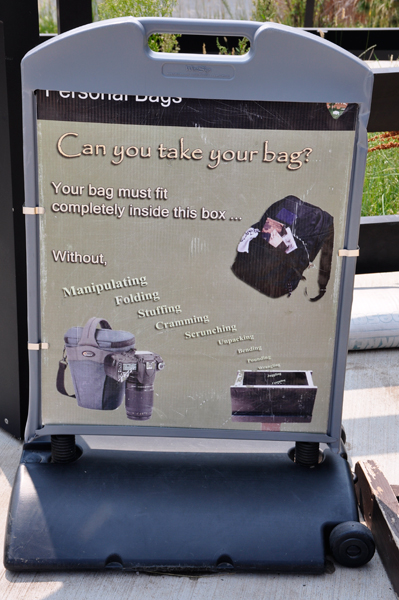 |
Hydrogeology: Jewel Cave was
formed by the gradual dissolution of limestone by stagnant, acid-rich
water. The water enlarged a network of cracks that had formed during
the uplift of the Black Hills approximately 60 million years ago. The
layer of calcite crystals that covers much of the cave walls was created
by the re-deposition of calcite from water saturated with the mineral.
After the water that formed the cave drained, speleothems (cave formations)
began to form. Jewel Cave contains all the common types of calcite formations,
such as stalactites, stalagmites, flowstone, and frostwork, although
not in the same abundance as other well-known caves. The dry parts of
the cave contain some formations created by the deposition of gypsum,
such as gypsum needles, beards, flowers, and spiders. Finally, Jewel
Cave contains a very rare formation called a hydromagnesite balloon.
Those are created when gas of an unknown source inflates a pasty substance
formed by the precipitation of the magnesium carbonate hydroxide mineral. |
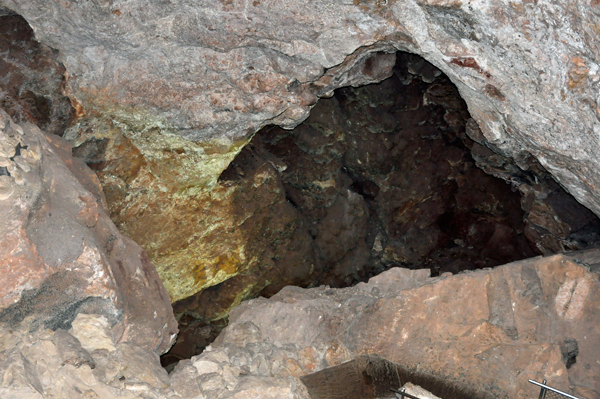 |
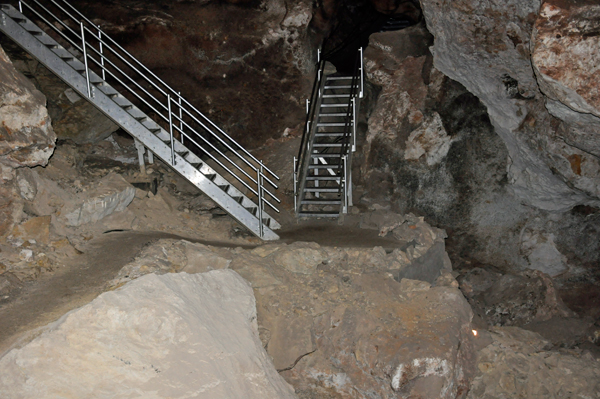 |
The temperature in the cave
is 49°F year-round. The Scenic Tour route provided the two RV Gypsies
the opportunity to visit various cave chambers and passages decorated
with calcite crystals and other speleothems. This tour is considered
a modern day walking tour along a paved trail with electric lighting.
The tour entered and left the cave by elevator in the Visitor Center.
The Scenic Tour was moderately strenuous
and lasted 1 hour and 20 minutes. The two RV Gypsies entered Jewel Cave
by an elevator that dropped them deep into the earth and from there,
exited onto a metal platform in a spacious cavern. True to its name,
the walls of Jewel Cave sparkled. |
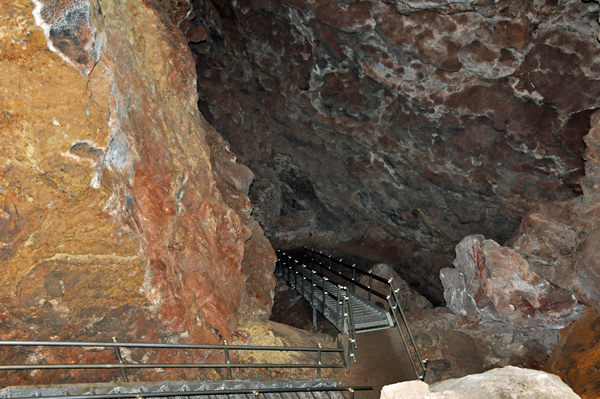 |
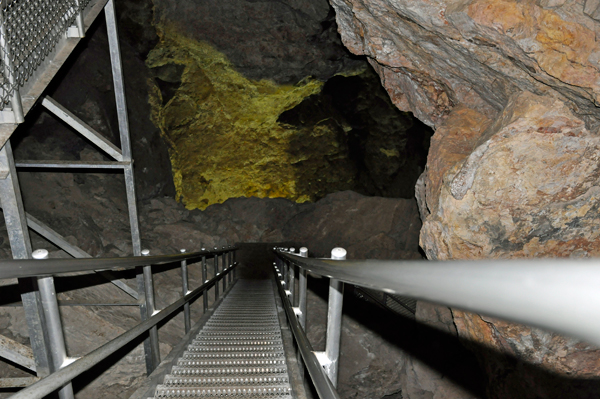 |
The tour route involved walking
up and down 723 stair steps along a 1/2 mile loop,
(equivalent to 40 flights of stairs). During the Scenic Tour, there
were two types of calcite crystals known as nailhead spar and dogtooth
spar, which are the jewels of Jewel Cave. In addition, there was also
boxwork, cave popcorn, flowstone, stalactites, stalagmites, draperies,
and a long ribbon drapery called the cave bacon. |
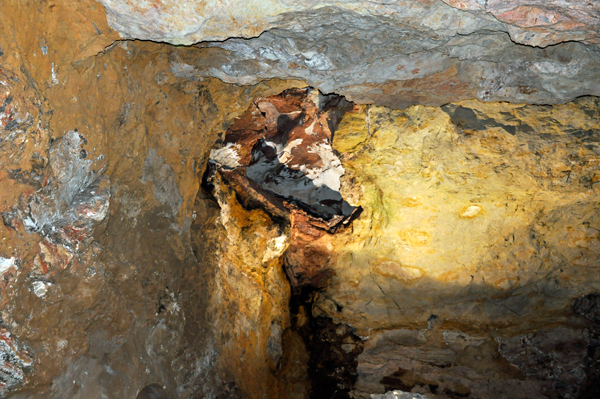 |
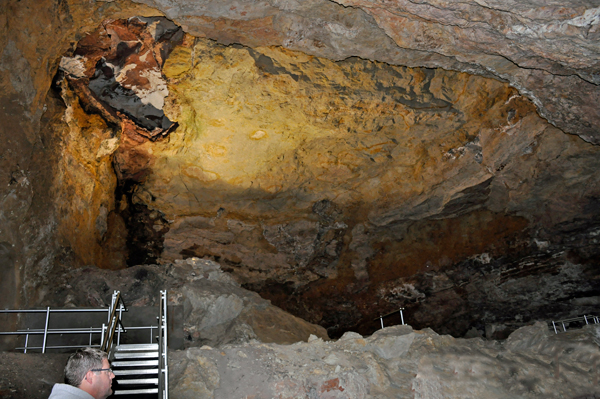 |
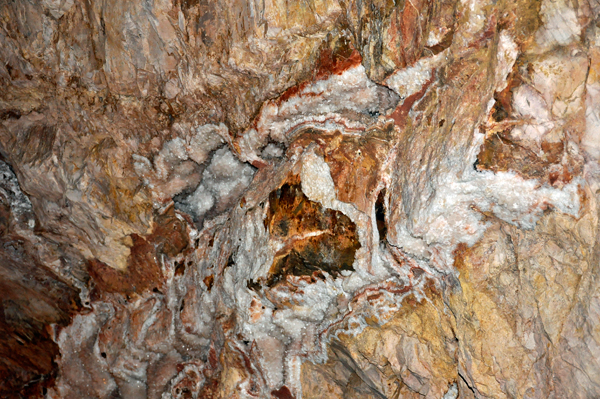 |
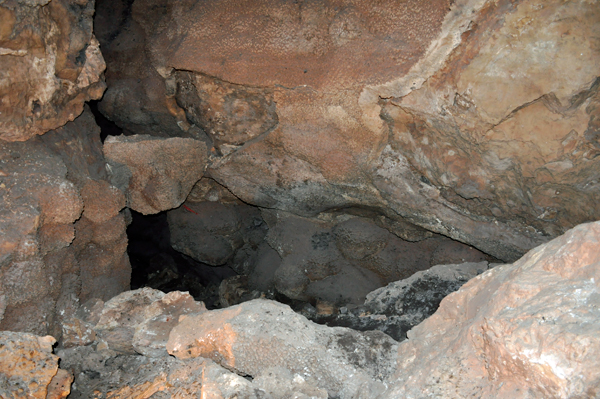 |
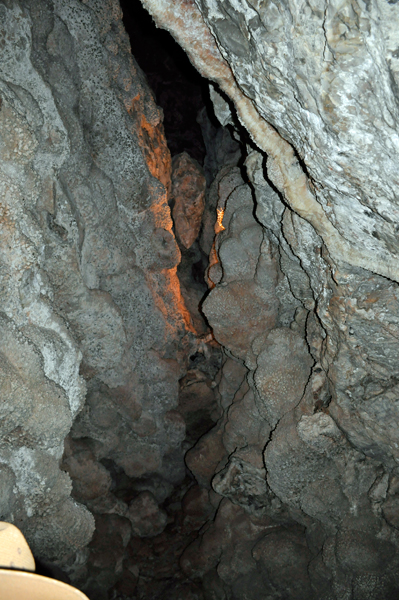 |
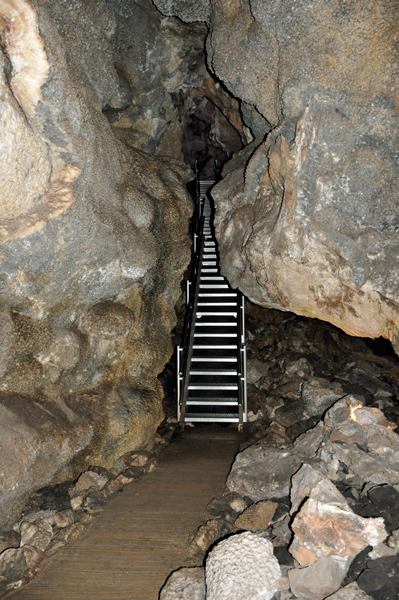 |
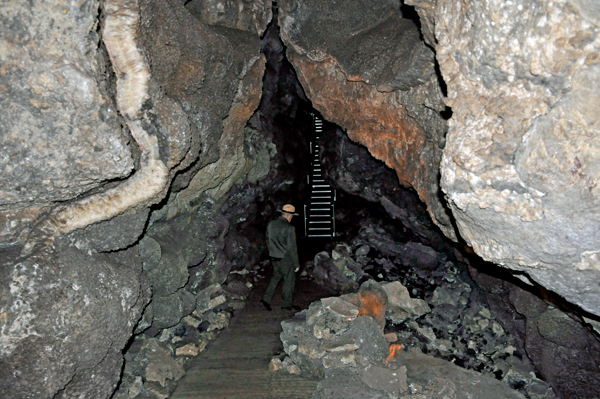 |
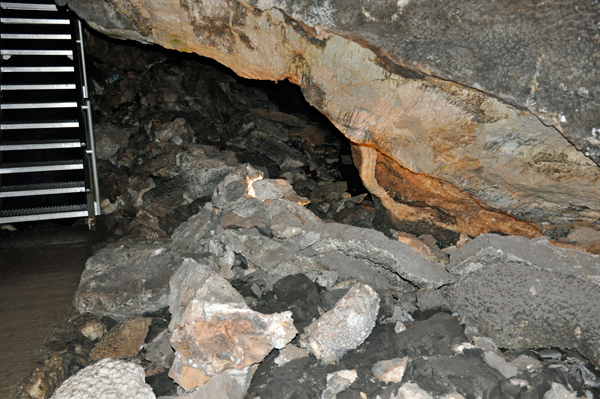 |
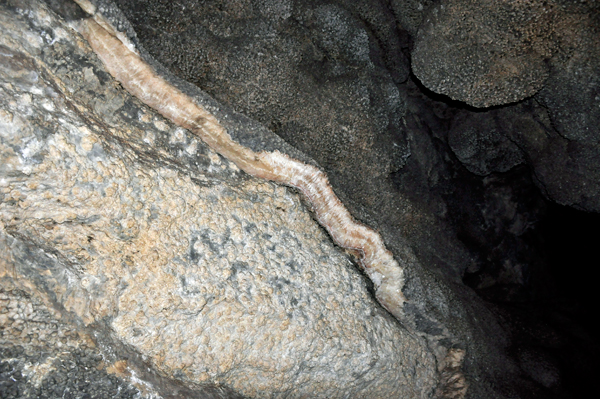 |
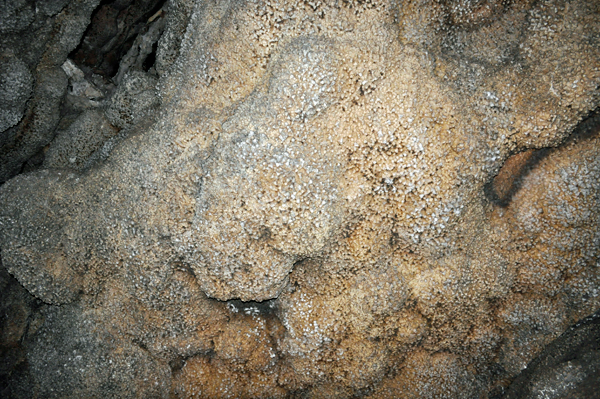 |
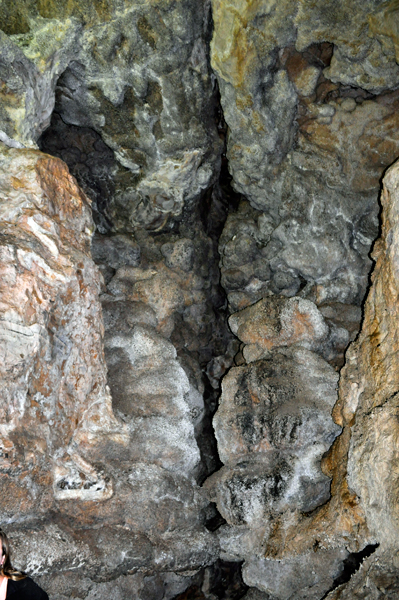 |
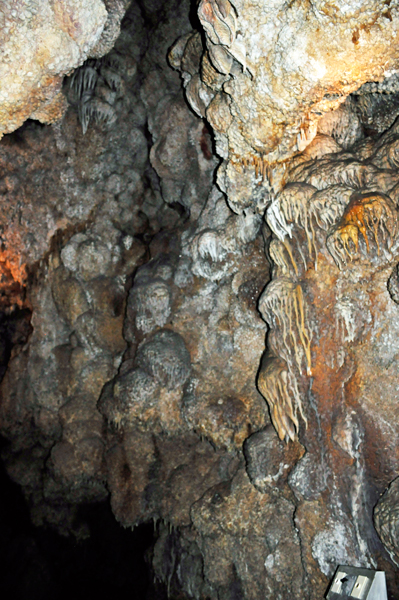 |
Below: Stalactites and Calcite
crystals |
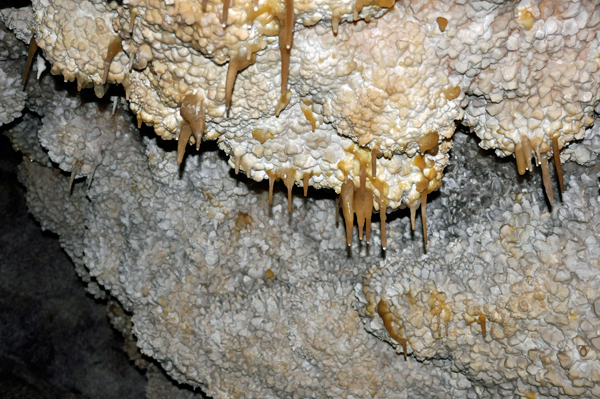 |
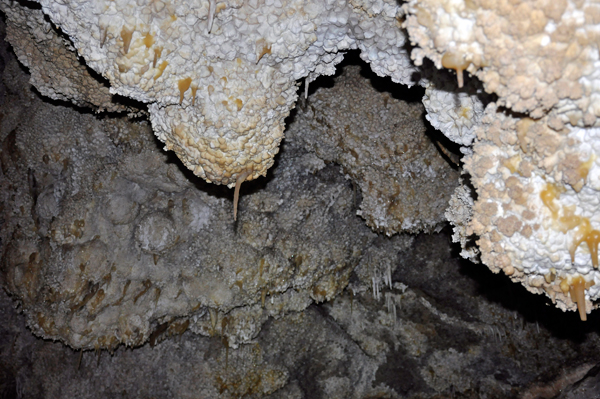 |
Below: Lee Duquette enjoying
the view inside Jewel Cave. |
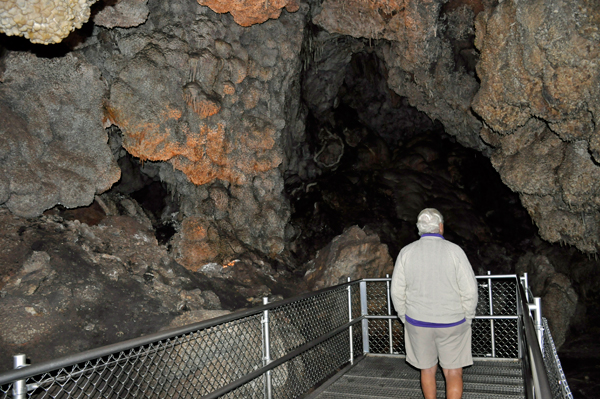 |
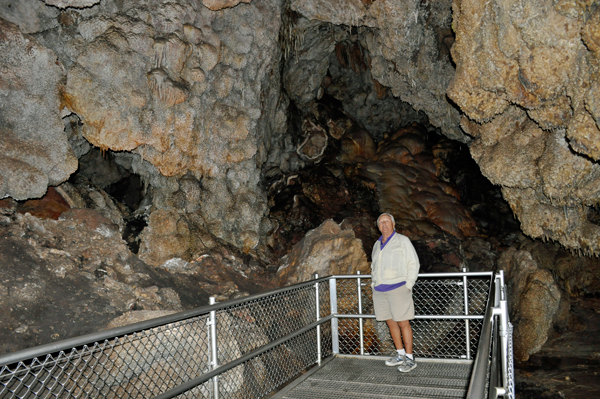 |
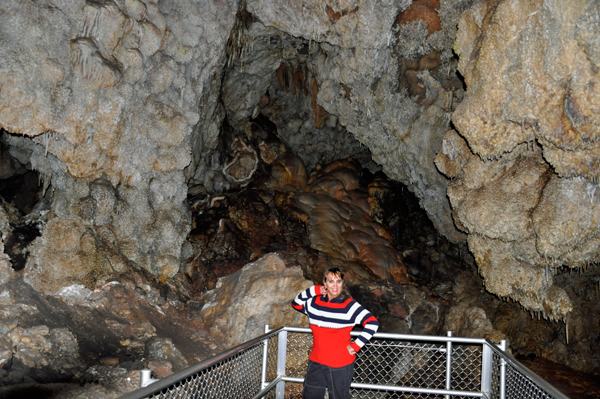 |
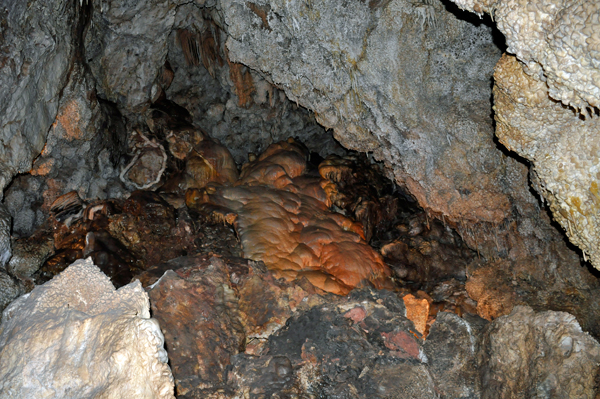 |
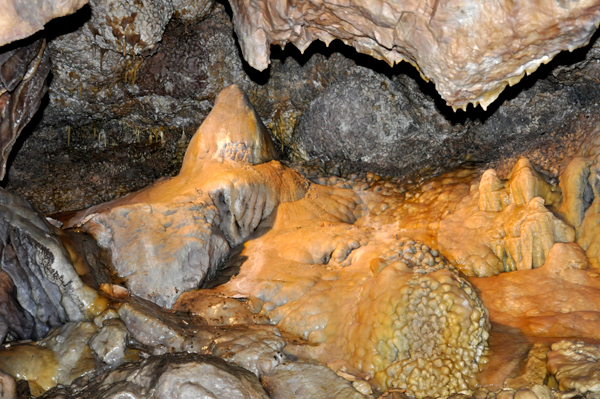 |
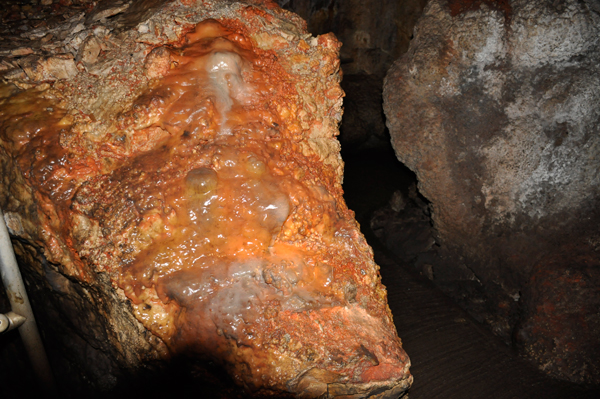 |
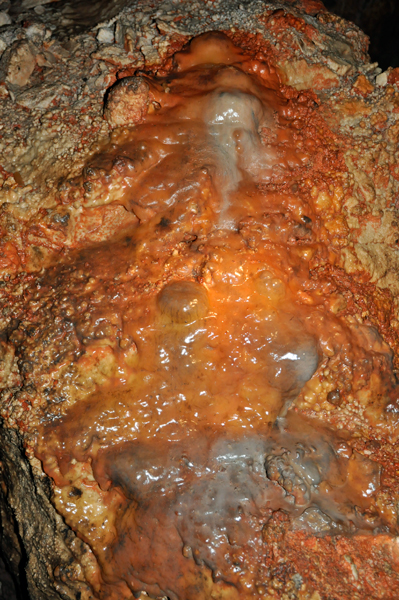 |
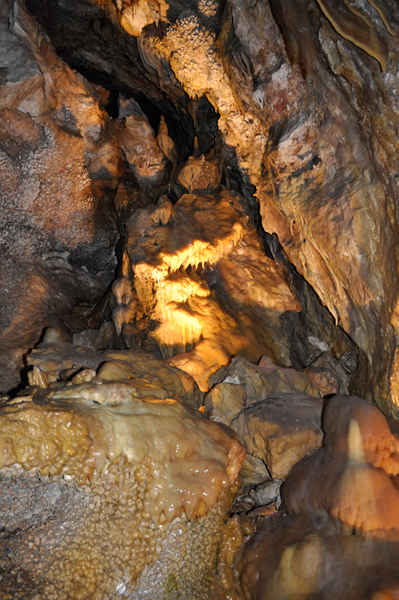 |
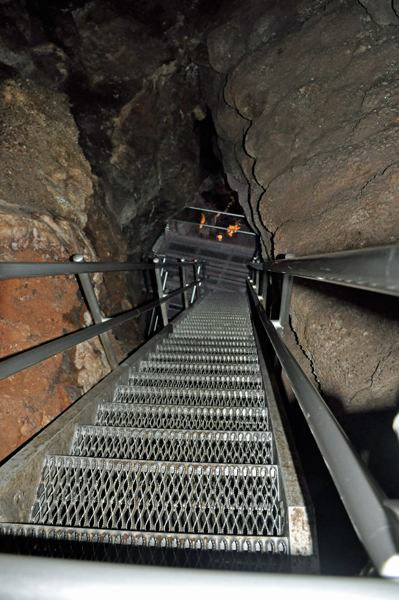 |
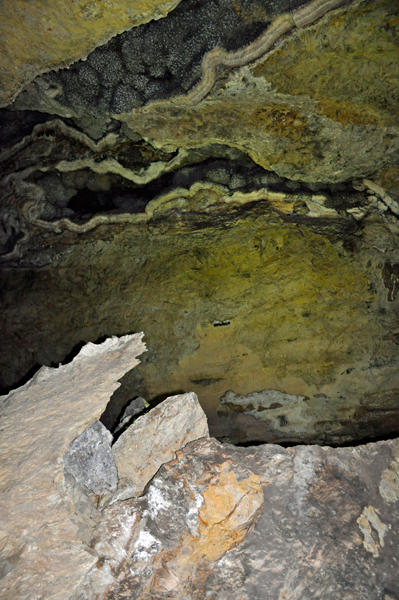 |
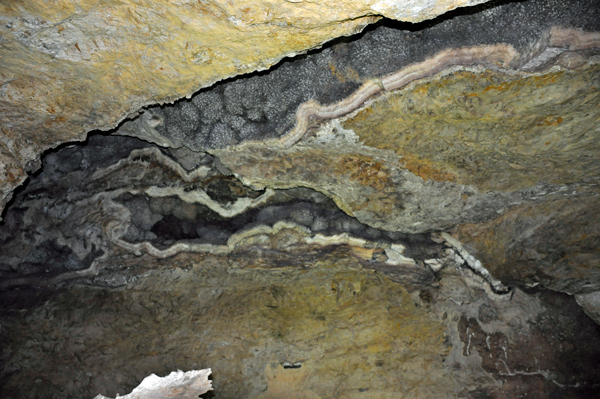 |
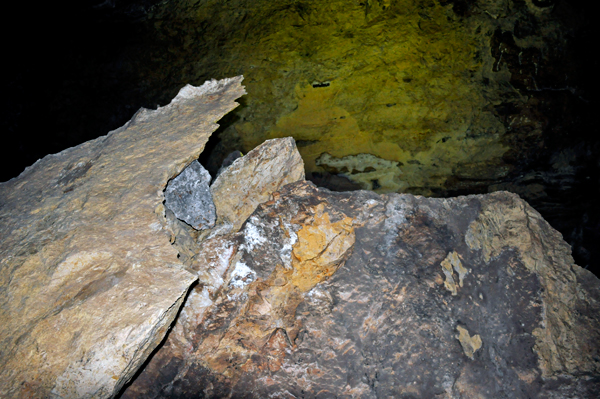 |
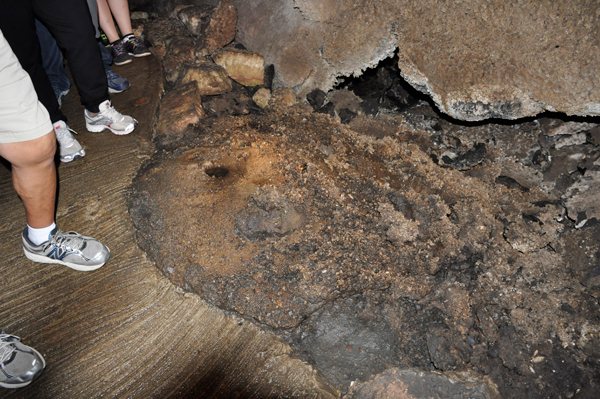 |
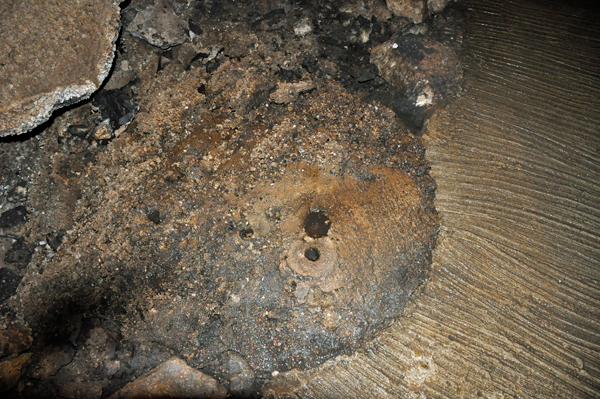 . . |
Below: A long ribbon drapery
called the "cave bacon". The variation in color looked
a lot like bacon fat. |
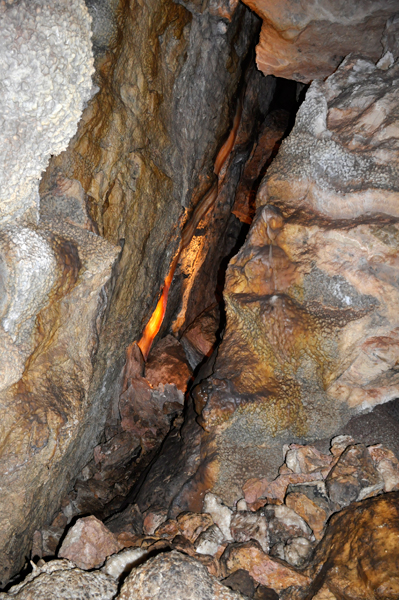 |
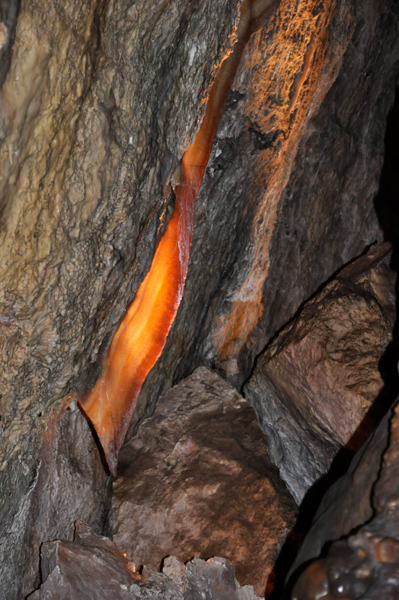 |
Below: Another tour group in the upper
room |
|
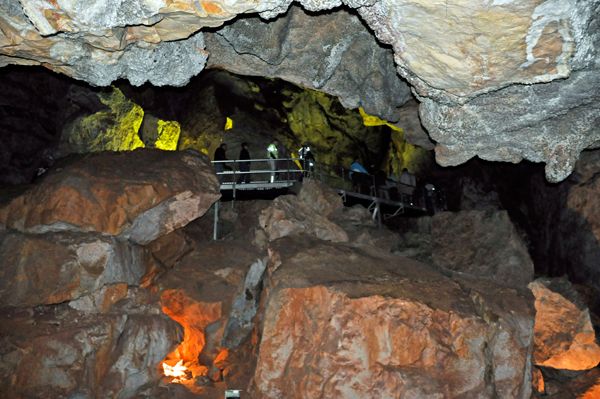 |
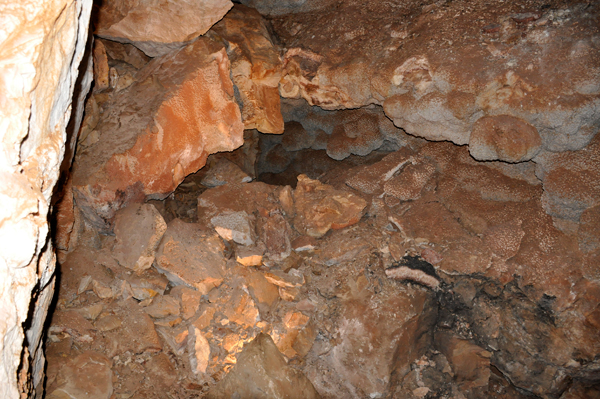 |
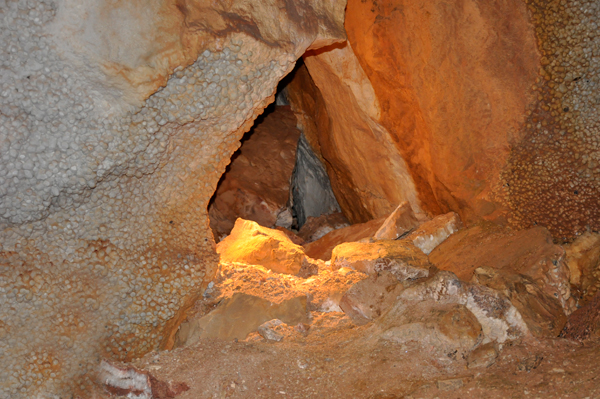 |
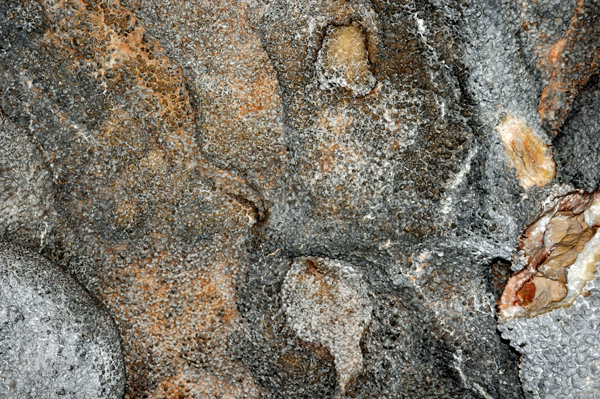 |
Below: An unique design
in the walls at Jewel Cave |
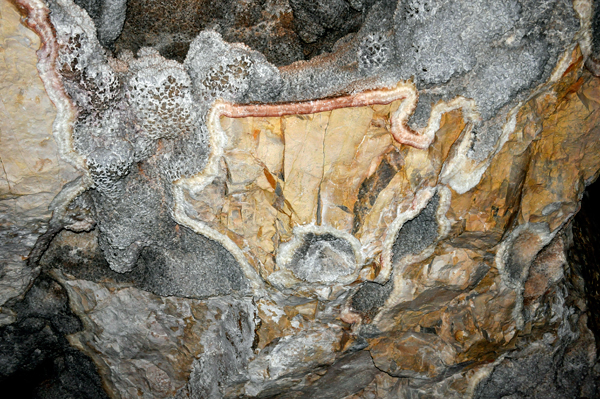 |
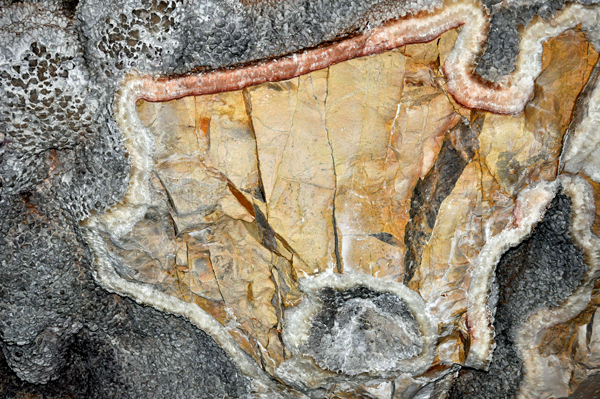 |
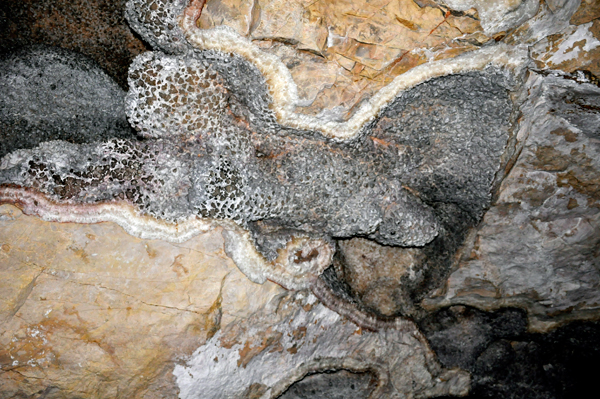 |
 |
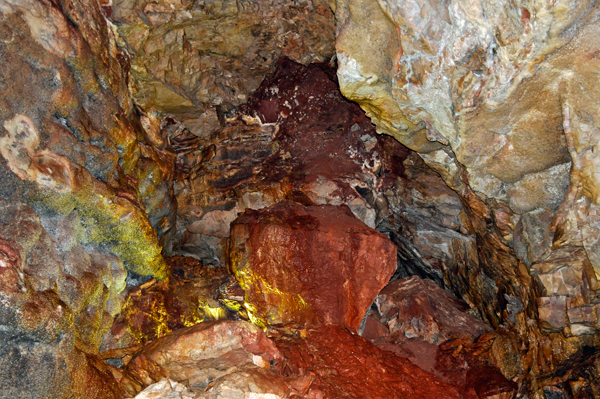 |
Below: OUTSIDE of the cave
was an ad for the Wild Caving Tour and a stone opening so kids and adults
could see if they were capable of crawling through such tight spots. |
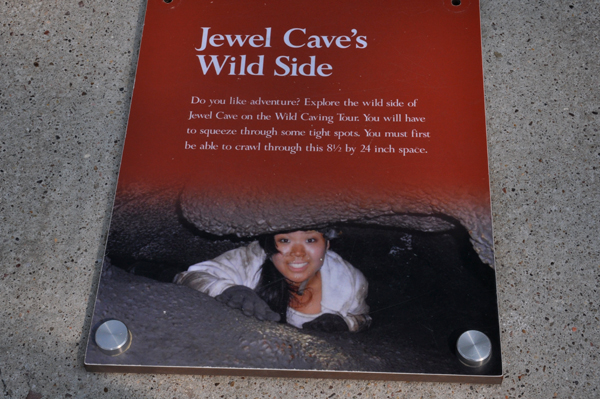 |
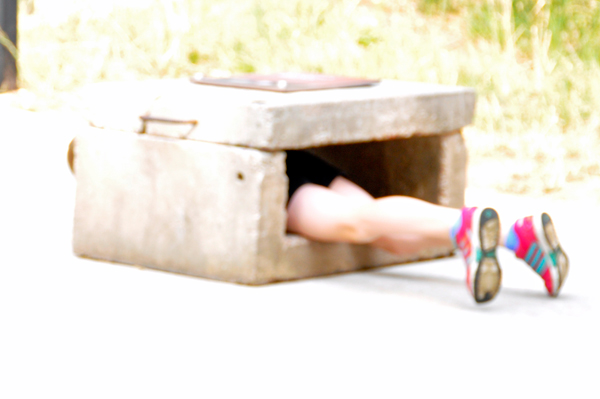 |
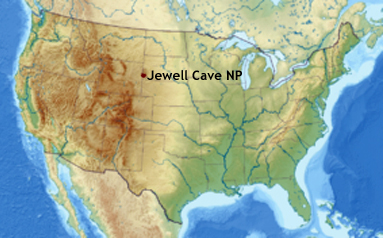





































 .
.












 Frank
and Albert Michaud, two local prospectors, discovered the cave in 1900,
when they felt cold air blowing out of a small hole in a canyon. It
is unknown whether any previous inhabitants of the area were aware of
the natural cave opening, which was not large enough for a person to
enter. After enlarging the cave entrance with dynamite, the Michauds
found a cavern lined with calcite crystals, which led them to name it
"Jewel Cave." The brothers tried to capitalize on the discovery,
widening the opening, building walkways inside, and opening it to tourists.
Although their venture was unsuccessful, news of the discovery eventually
reached Washington. President Theodore Roosevelt proclaimed Jewel Cave
a National Monument on February 7, 1908. The area around the natural
entrance to the cave was further developed by the Civilian Conservation
Corps in the 1930s. The National Park Service assumed management of
the monument in 1933 and began offering tours in 1939.
Frank
and Albert Michaud, two local prospectors, discovered the cave in 1900,
when they felt cold air blowing out of a small hole in a canyon. It
is unknown whether any previous inhabitants of the area were aware of
the natural cave opening, which was not large enough for a person to
enter. After enlarging the cave entrance with dynamite, the Michauds
found a cavern lined with calcite crystals, which led them to name it
"Jewel Cave." The brothers tried to capitalize on the discovery,
widening the opening, building walkways inside, and opening it to tourists.
Although their venture was unsuccessful, news of the discovery eventually
reached Washington. President Theodore Roosevelt proclaimed Jewel Cave
a National Monument on February 7, 1908. The area around the natural
entrance to the cave was further developed by the Civilian Conservation
Corps in the 1930s. The National Park Service assumed management of
the monument in 1933 and began offering tours in 1939.


























